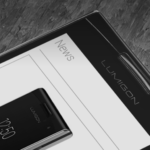By Doug Lyon, PhD, PE
Crowdfunding has provided a catalyst that eases the commercialization of innovation.
However, in the search for a viable business model, the pre-sales approach of kickstarter only mitigates inventory risk. There is still plenty of prototype risk. In this story, I describe
the path to launching a kickstarter project, the approach, steps (and missteps) as well as the thought process that goes into a launch.
1. The Go/No-Go Decision
This is the first, and most critical phase of any new product. The decision to commercialize an idea is not an easy one. Typically we are faced with several
questions:
A) Sustainable competitive advantage
Can the product be knocked off easily?
In my case, I have a very simple product, one that includes software and hardware. Since I control both, I see no need for either a patent or expensive intellectual property. As long as I keep my customer base happy, I have no fear about letting others know about my hardware, as my ability to continue to innovate software features for the product is my special sauce. For me, a trademark and copyrights are probably enough. I have no money to prosecute a patent.
I am the President of the Inventors Association of Connecticut. On our board is a patent attny. He has practiced for many years and is a partner in a law firm. He says the number of small inventors that he (and his firm) who have made money with their patents is ZERO. Prosecuting a patent costs between 2 and 25 million dollars. Who can really afford these patents?
My last international patent (PCT, Canada, Japan, USA) cost $100k over the life of the patent (and we never sued anybody). And the patent never really made very much money.
Now, if your business-model is based in licensing, then patents may be the way to go. Licensing is a topic of another article.
B) TAM) Total addressable market
This is a hard one. I am after the arduino market.
For me, the total addressable market for arduinos is small. Arduino had registered over 700,000 official boards in 2013, but it is growing, fast. Nobody knows, but guesses in the low millions are probably as good as we can get.
C) SAM) Serviceable Available Market (subset of TAM)
I am after those who are interested in audio and have an arduino.
Here it is a total guess, perhaps 10%? Figure 70,000.
D) SOM or Serviceable Obtainable Market (subset of SAM)
This is the part of SAM I am after.
Customers are on kickstarter and are willing to back a start up.
Perhaps 1% of TAM? Figure 700.
E) Margin
I like to take the target price, cut it in half, then determine if my SOM can bring the cost of goods down to that figure. For me, building 500 units on a first kickstarter run would let me charge $20 and make a $10 profit with $10 on the cost of goods. Kickstarter research shows, $20-$25 is a perfect price point for kickstarter projects
So, we are a GO, next comes the prototype.
2. Mitigating Inventory Risk
Manufacturing is routine engineering. It is work, no doubt. But the big risk is that the product will not sell (inventory risk). Sales should drive production.
The worst-case is that you have unsold product sitting in the garage. Kickstarter does a good job at testing the market.
The jury is still out on this one, but if Mr. Market says “NO”, be thankful that you did not go into production.
Yes, you lost your prototyping time and money, but it could have been worse!
Conclusion
A failed kickstarter project is a learning experience. Lessons cost money. And good lessons cost LOTS. Such is the life of the entrepreneur, in a search for a viable business model.
I hope you liked my story. If you have any questions
(or suggestions) for me, I can be reached at:
For details on my product launch (with video,
rewards, etc.) see:
http://tinyurl.com/AudioShield
About the Author:
Doug Lyon, PhD from RPI, worked at AT&T Bell Labs and Jet propulsion Lab at Cal Tech. Director and founder of the Electrical and Computer Engineering graduate program at Fairfield University, Senior Member of IEEE, President of DocJava, Inc, President of Inventors Association of Connecticut (IACT). Member of the Angel Investors Forum of Connecticut. Author of 3 books and 49 journal papers. Free papers, courses and software are all available from my web page, www.docjava.com








